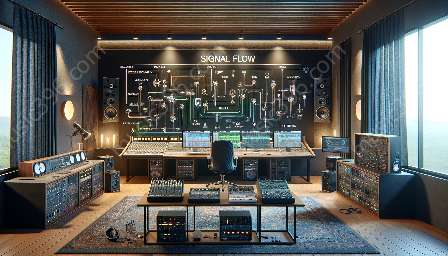Audio mastering is a crucial step in the music production process, and mastering engineers use a variety of techniques to enhance the overall sound quality of a track. One such technique that has gained popularity in recent years is mid/side processing. Understanding mid/side processing in the context of audio mixing and mastering is essential for achieving professional-quality results.
What is Mid/Side Processing?
Mid/side processing is a technique that allows engineers to manipulate the stereo image of a mix by independently processing the middle (mid) and side (stereo) components of a signal. This technique offers greater control over the spatial characteristics of a mix, enabling engineers to fine-tune the balance between the center-channel and the stereo width of the sound. In mastering, mid/side processing can be used to enhance the clarity, depth, and overall impact of a mix.
Common Mid/Side Processing Techniques
Mastering engineers employ a range of mid/side processing techniques to achieve desired sonic results. Some of the most common techniques include:
- Mid/Side EQ: Using mid/side EQ to independently equalize the mid and side signals allows for precise tonal shaping. For example, boosting the high frequencies in the side signal can add airiness and spaciousness to the mix, while cutting the low frequencies in the mid signal can clean up the low-end without affecting the stereo width.
- Mid/Side Compression: Applying compression independently to the mid and side signals enables engineers to control the dynamics and balance of the mix more effectively. For instance, compressing the mid signal can help emphasize the center-channel elements, while compressing the side signal can increase the perceived stereo width and ambience.
- Mid/Side Saturation: Saturation processing applied to the mid and side channels can add harmonic richness and warmth to the mix. By saturating the mid signal, engineers can enhance the body and punch of the center-channel elements, while saturating the side signal can introduce depth and character to the stereo image.
- Mid/Side Reverb and Delay: Applying reverb and delay effects separately to the mid and side signals can enhance the spatial depth and dimension of the mix. Using shorter reverbs and delays on the side signal can create a sense of spaciousness, while longer reverbs and delays on the mid signal can add depth and dimension to the center-channel elements.
Understanding Mid/Side Processing in Mastering
For mastering engineers, understanding how mid/side processing affects the overall sound is crucial for making informed decisions during the mastering process. By manipulating the mid and side components of a mix, engineers can address specific tonal, dynamic, and spatial aspects to achieve the desired sonic impact. However, it's important to exercise restraint and apply mid/side processing judiciously to avoid altering the mix's original character excessively.
Moreover, mastering engineers should have a clear understanding of the stereo imaging and spatial balance of the mix before implementing mid/side processing. By critically evaluating the mix's mono compatibility, phase coherence, and stereo width, engineers can determine the appropriate areas for mid/side processing to enhance the overall mix without introducing unwanted artifacts or imbalances.
Conclusion
Mid/side processing has become an invaluable tool for mastering engineers seeking to elevate the quality and impact of their final mixes. Understanding the various mid/side processing techniques and their applications in mastering is essential for achieving professional-grade results. By employing mid/side processing judiciously and with a deep understanding of its impact on the mix, mastering engineers can sculpt a captivating and immersive sonic experience for the listener.































